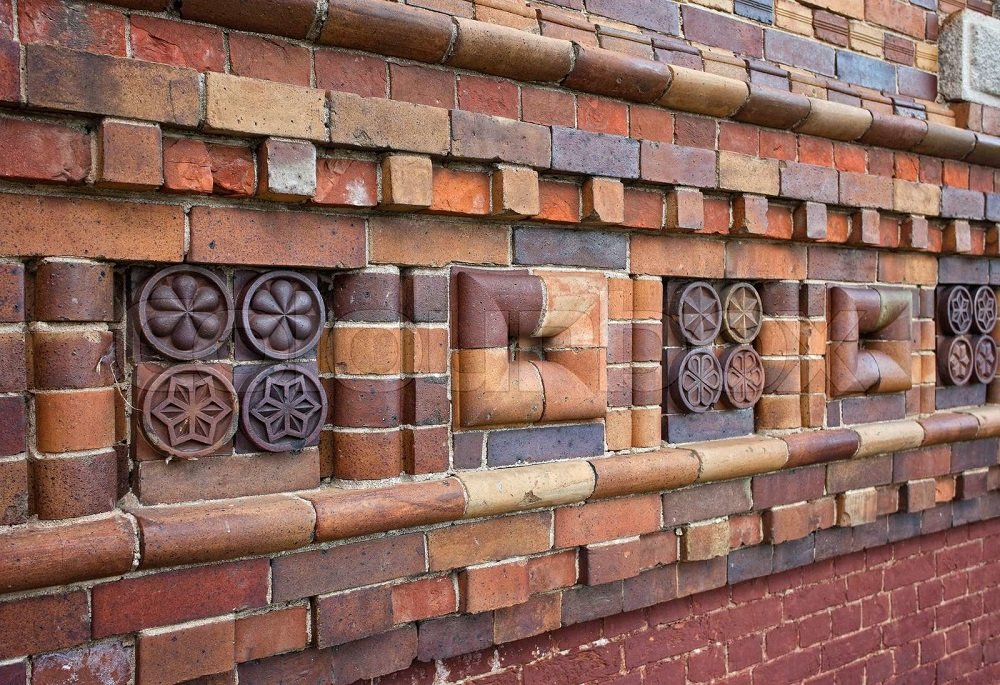#14407. Historical Brick Facade with Decorative Ceramic Inserts

This image showcases an excellent example of decorative brickwork with ornamental elements characteristic of historical architecture. We are looking at a fragment of a brick facade that masterfully combines various shades of ceramic brick—from deep burgundy to light sandy tones.
The decorative ceramic inserts with relief patterns in the form of floral rosettes and geometric ornaments deserve special attention. These elements create a rhythmic pattern along the horizontal line of the facade, giving elegance and artistic value to the strict brickwork. Each insert is crafted using traditional molding techniques, highlighting the artisanal nature of the work.
Structurally, the facade is organized with clear horizontal rhythms: rows of bricks of different thicknesses and colors form protruding cornices, between which the decorative elements are placed. This is a classic technique for adding plasticity to the wall plane, which can be applied in modern facade design, creating an interesting play of light and shadow on the surface.
In home construction, similar techniques can be adapted using modern materials. For example, clinker bricks of various shades or special decorative elements can be used to create a facade with individual character. Horizontal bands, protruding cornices, and ornamental inserts—all these historical techniques can enrich modern architecture, giving it depth and textural richness.